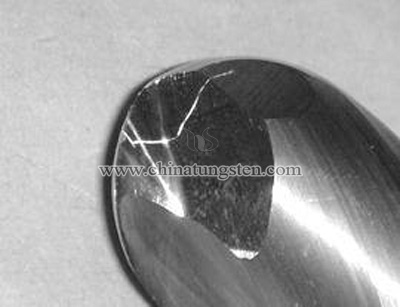Injection Molding Defect - Crack
- Details
- Category: Tungsten Information
- Published on Monday, 09 October 2017 21:01
Crack is one of the most common defects during injection molding, of which the main cause is stress and deformation. The stress mainly includes residual stress or external stress. When the crack develops more serious, it will lead to the fracture of the products, especially for hard alloy or ceramic products.
Causes and Improvement Measures
(1) Unreasonable product structure design. Sharp corners and notches in injection products usually lead to a large residual stress concentration of the components, resulting in cracks or even fracture on the surface of the products. The design of arc chamfer can not only reduce the stress concentration factor, but also make the melt flow more smoothly and make the product easier to be removed.
(2) Excessive filling. Injection value is too high that the residual stress in the mold too high, resulting in cracks. If the crack is produced around the gate, multiple pin point gates, side gates and handle gates shall be considered. In addition, since the injection pressure has a positive relationship with the residual stress, the residual stress can be reduced by reducing the injection pressure.

Similarly, in the process of holding pressure, the packing pressure should not be too large. Appropriately increasing the die temperature can also reduce the stress produced during contraction. Prolonging the cooling time properly is also beneficial to the release of residual stress.
(3) External force. When unload the mold, the surface of the product will be abrade and even crack. In the design, we should consider the demoulding.
- Tungsten Carbide Manufacturer & Supplier, Chinatungsten Online: tungsten-carbide.com.cn
- Tungsten News & Prices of China Tungsten Industry Association: www.ctia.com.cn
- Molybdenum News & Price: news.molybdenum.com.cn
- Tel.: 86 592 5129696; Fax: 86 592 5129797; Email: sales@chinatungsten.com



 sales@chinatungsten.com
sales@chinatungsten.com